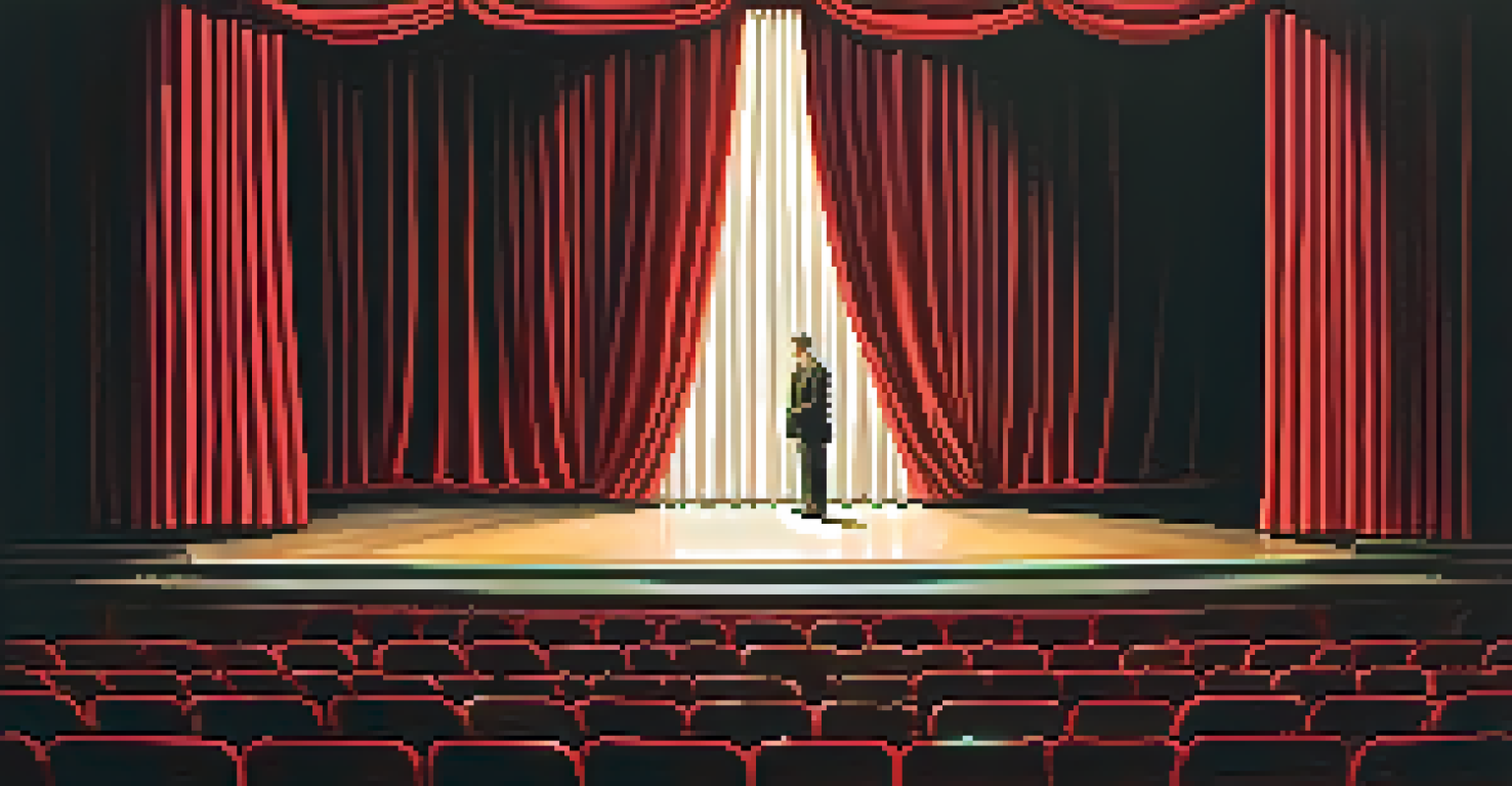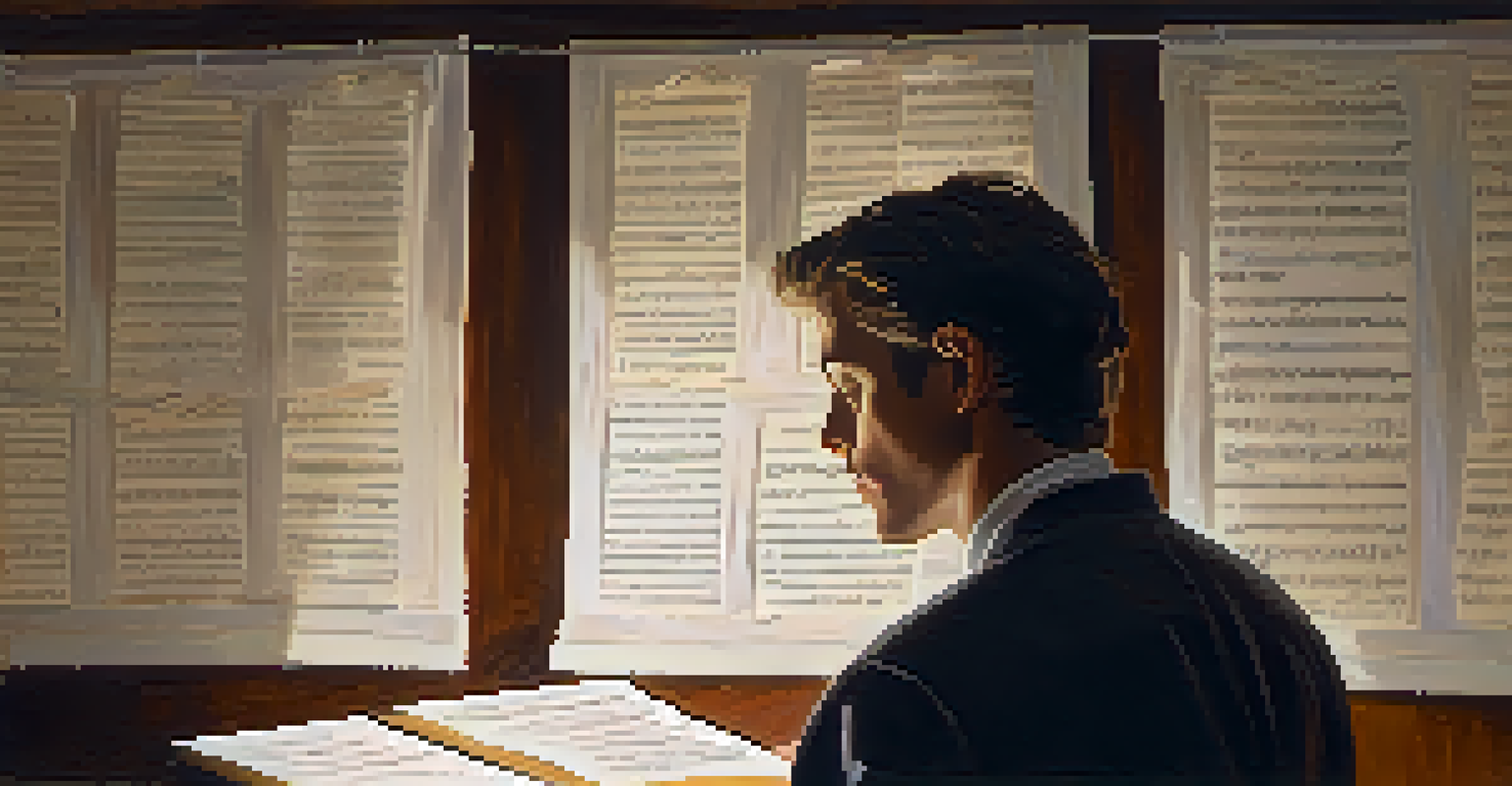The Strasberg Method: Unlocking Deep Emotional Connections

What is the Strasberg Method and Its Origins
The Strasberg Method, developed by Lee Strasberg in the 1950s, is a technique that focuses on emotional authenticity in acting. It draws heavily from Stanislavski's system, emphasizing the importance of an actor's personal experiences and emotions. By encouraging actors to tap into their own feelings, this method aims to create performances that resonate deeply with audiences.
Acting is not about being someone different. It's finding the similarity in what is apparently different, then finding myself in there.
Strasberg believed that the core of acting lies in the ability to connect genuinely with one's emotions. He incorporated exercises and improvisation to help actors explore their innermost thoughts and feelings. This approach not only enhances an actor's performance but also fosters a deeper understanding of human emotions.
The method gained popularity in the United States, especially in the realm of Method Acting, where actors fully immerse themselves in their roles. It has since influenced countless performers and remains a staple in acting schools today.
Key Principles of the Strasberg Method
At the heart of the Strasberg Method are several key principles, including sense memory and emotional recall. Sense memory involves actors using their own past experiences to evoke specific emotions required for a scene. For instance, an actor might recall a personal loss to portray sadness authentically on stage.

Emotional recall is a powerful tool that allows actors to draw upon their memories to fuel their performances. This technique not only helps in creating believable characters but also encourages actors to be vulnerable and honest in their work. The result is a performance that feels genuine and relatable, captivating the audience.
Emotional Authenticity in Acting
The Strasberg Method emphasizes emotional authenticity by encouraging actors to draw from their personal experiences and emotions.
Moreover, these principles encourage actors to develop a profound connection with their characters. By bridging their own emotional experiences with those of their roles, actors can deliver performances that resonate on a deeper level.
The Role of Imagination in the Strasberg Method
Imagination plays a critical role in the Strasberg Method, complementing the emotional techniques. While actors use personal memories to connect, they also employ their imagination to build the world of the character. This dual approach allows for a richer, more layered performance.
The actor's job is to be a conduit for the audience's emotions, to make them feel something deeply.
For instance, when preparing for a role, an actor might visualize the character's background and circumstances, merging those imaginative details with their emotional experiences. This blend of fact and fiction creates a more compelling portrayal, making the character's journey feel authentic.
The use of imagination not only enhances the performance but also keeps the actor engaged and invested in the character's story. This connection ultimately translates to a more immersive experience for the audience.
Techniques for Practicing the Strasberg Method
Practicing the Strasberg Method involves various exercises designed to unlock emotional depth. One common technique is the 'private moment' exercise, where actors explore their inner thoughts and feelings in a controlled setting. This practice helps them to become more aware of their emotional landscape and how it can enhance their performances.
Another effective exercise is the 'emotion memory' technique, where actors recall specific memories tied to different emotions. By reliving these moments, they can better understand how to express those feelings on stage. This not only builds confidence but also cultivates a sense of authenticity in their acting.
Techniques for Emotional Depth
Key techniques like sense memory and emotional recall help actors explore their feelings, enhancing the authenticity of their performances.
These techniques encourage actors to push their boundaries and explore the depths of their emotional capabilities. As they become more comfortable with vulnerability, their performances become increasingly impactful.
Strasberg Method's Influence on Modern Acting
The Strasberg Method has significantly shaped modern acting, influencing countless actors and directors. Its focus on emotional truth has led to a generation of performers who prioritize authenticity in their work. This shift has changed how audiences perceive and connect with performances, making emotional resonance a key component of successful storytelling.
Many acclaimed actors, such as Al Pacino and Marilyn Monroe, have credited the Strasberg Method for their ability to deliver powerful, memorable performances. Their success serves as a testament to the effectiveness of this technique in tapping into raw, human emotions.
As new techniques and methods continue to emerge, the core principles of the Strasberg Method remain relevant. Its emphasis on emotional connection continues to inspire actors and resonate with audiences worldwide.
Challenges of the Strasberg Method
While the Strasberg Method offers a pathway to emotional depth, it poses certain challenges for actors. One significant hurdle is the risk of emotional exhaustion, as consistently delving into personal memories can be draining. Actors must learn to balance their emotional exploration with self-care to avoid burnout.
Additionally, some actors may find it difficult to access their emotions on demand, which can lead to frustration. This challenge requires practice and commitment, as the process of emotional recall is not always straightforward. Learning to navigate these obstacles is part of the journey toward becoming a skilled actor.
Influence on Modern Acting
The Strasberg Method has significantly shaped modern acting, promoting genuine emotional connection and resonating with audiences worldwide.
Despite these challenges, many actors find the rewards of the Strasberg Method to be worth the effort. The ability to connect deeply with a character and convey genuine emotions can lead to transformative performances.
The Future of the Strasberg Method
As acting continues to evolve, the Strasberg Method remains a vital tool for many performers. Its principles can adapt to various styles and genres, making it relevant for both stage and screen acting. This versatility ensures that the method will continue to thrive in the ever-changing landscape of entertainment.
Moreover, the rise of online acting classes has made the Strasberg Method more accessible to aspiring actors worldwide. With the ability to learn from home, new generations can explore emotional techniques without geographical limitations.

Looking ahead, the Strasberg Method is likely to inspire future actors, encouraging them to embrace their emotions and foster genuine connections with their characters. This enduring legacy makes it a cornerstone of acting education.